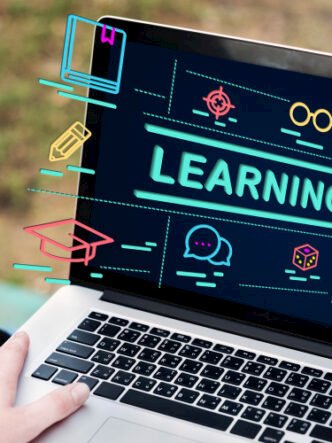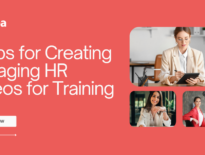The workplace landscape has undergone a radical transformation. Remote and hybrid workforces are now the norm, demanding a modern approach to welcoming and integrating new hires. The need of the hour is a digital employee onboarding strategy that streamlines the process, fosters connection even across vast distances, and sets new hires on a path to success from the get-go. In this blog, I’ll reveal the power of digital employee onboarding and equip you with the knowledge and tools to develop a winning program for your ever-evolving workforce.
Let’s get ready to discover how this innovative approach can transform your new hire experience in the age of remote work.
What Is Digital Employee Onboarding?

Digital employee onboarding is what comes after a new employee is hired.
It is about welcoming them into the company, helping them learn about the company culture and business goals, and giving them sufficient knowledge to get started with their roles.
But when we say digital, the entire process takes place online, and unlike traditional methods, it does not require in-person orientations and manual training processes. Everything can be easily done using digital onboarding tools like online portals, video tutorials, virtual reality simulations, and AI-driven personalization to streamline the experience.
This approach improves onboarding by increasing efficiency, accessibility, and engagement. It creates a personalized experience that transcends physical limitations and empowers employees to start strong from day one.
Benefits of Digital Employee Onboarding
- Automates Tasks, Reduces Paper Work & Manual Errors: Digital onboarding helps automate mundane tasks such as collecting paperwork and delivering welcome materials. Hence, eliminating paper waste and significantly decreasing the chances of any errors.
- Saves Time and Resources: When tools are used to take care of mundane tasks such as paperwork and providing welcome materials and introductions, it reduces the amount of manual work required by both HR and new hires. This frees up valuable time, allowing for faster onboarding and quicker integration into the team.
- Centralized Information: Since digital onboarding platforms provide everything in a centralized space, it becomes easier for new hires to access company policies, training resources, and important documents anytime, anywhere.
- Facilitates Remote Onboarding: Nowadays organizations are hiring people from across the globe. This requires their remote onboarding process to be smooth and easy. Using Digital tools, new hires for remote or hybrid workforces can complete onboarding tasks and access information regardless of location, ensuring a smooth transition even without a physical office presence.
- Improves Retention Rate: A positive and engaging onboarding experience sets the tone for a new employee’s career journey. Digital onboarding can lead to happier and more informed workers, ultimately reducing turnover and boosting retention rates.
The Digital Employee Onboarding Process
1. Digital Preboarding
Before starting a new job, there is a lot of paperwork to fill out and things to get familiar with. But what if there is an easy and convenient way to do all of that online?
That’s where digital pre-boarding comes in. It’s like an online portal where new hires can submit their paperwork, complete background checks, and get access to all the information they need to know about the company they’ll be working for.
They can even watch a personalized video message from their team leader and connect with future colleagues through online communities.
By doing all of this before their start date, new hires can feel more prepared and excited to hit the ground running on day one.
2. Welcoming and Orientation
This stage focuses on making new hires feel comfortable and equipped.
53% of HR executives say good onboarding increases how engaged employees are. A digital platform can help new employees get introduced to their team and manager in a virtual welcome session.
This can also help them understand the company culture and values through interactive online modules.
Virtual orientation is a great way to replace long in-person sessions and make sure new hires have a personalized learning path. It’s also more fun and engaging, making it easier for new employees to get a good start in their new job.
3. Training and Development
Companies with comprehensive employee training programs have 218% higher income per employee than companies without formalized training.
In Digital onboarding, unlike the traditional method, classroom learning is replaced with an online library. This online library contains short and interactive courses for each employee’s role and the company’s processes.
The courses are designed to be engaging and easy to understand with the help of videos and fun activities. The best part is that digital tools allow managers to create personalized training plans for each employee, which means they can get real-time feedback and mentorship.
This way, new employees can learn and develop new skills without feeling overwhelmed.
4. Integration and Collaboration
Digital onboarding fosters a sense of belonging from day one.
By connecting with colleagues through online platforms, new employees can get to know their team members, participate in employee engagement activities, and work on projects together.
Additionally, mentorship programs can be offered online, which allows new employees to be paired with experienced team members who can offer guidance and support.
All of these digital tools can help new employees feel valued and included in the team, even if they are working remotely.
5. Ongoing Support and Feedback
The learning doesn’t stop after training.
Digital onboarding provides a continuous feedback loop. New hires can access knowledge bases and FAQs for ongoing reference.
These tools also help conduct regular check-ins with managers for feedback, performance discussions, and ongoing development opportunities.
This way new hires feel supported throughout their journey, and get a healthy work environment of continuous learning and growth.
Best Digital Employee Onboarding Tools
1. Video Communication Tools
Hiring new employees remotely can be a challenge since new hires need to get to know their team and learn about the company, the team, the technology used and so on.
Fortunately, there are tools like Cincopa to help make this process easier. Using Cincopa, managers can send personalized video messages to new hires, create online courses, and manage onboarding media from one place. Its content library feature makes it easy for new hires to learn on their own.
2. Human Resource Management Systems (HRMS)
HR management systems make the entire hiring process simple, organized, and efficient. They take care of everything from recruitment and introductory training to performance management and payroll.
Examples of these platforms are BambooHR, Keka HR, and Rippling which allow you to create a unique onboarding program customized to the needs of your company and new hires.
The platforms provide one central location where new hires can access all the necessary information, including company policies, training materials, and contact information for key personnel.
HRMS also helps automate repetitive tasks like sending welcome emails and collecting feedback, which saves time for HR and managers to focus on more important tasks.
3. Employee Engagement Tools
When someone starts a new job, it can feel overwhelming and isolating. That’s why engagement tools are important to help new employees feel more connected and included right from the start.
These tools can help share important news, create social spaces for employees to chat, and recognize people who do great work. And keeping your employees engaged leads to 21% more productivity and 22% more profitability.
Some examples of such tools are Bonusly, Leapsome, and Motivosity which make it easier for new people to feel welcome and valued, which can help them do their best work.
4. Learning Management Systems (LMS)
40% of Fortune 500 companies use Learning Management Systems to stay competitive. A Learning Management System (LMS) is a platform that can store and deliver various types of training materials, such as videos, tutorials, and assessments.
Tools like TalentLMS, 360Learning, and Docebo help new employees learn the necessary knowledge and skills to perform their jobs well.
For instance, a new marketing employee can use an LMS to access interactive modules on brand strategy, social media marketing tools, and company style guides.
The LMS can track the progress of the new employee through the modules and conduct quizzes or tests to evaluate their understanding of the material. This guarantees that all new hires, regardless of their location or department, receive a consistent and structured learning experience.
Provide The Best Digital Employee Onboarding Experience
As you start on your digital onboarding journey, here are some key takeaways to keep in mind:
- Personalize the experience, and tailor content and resources to the new hire’s role and background.
- Make onboarding interactive with quizzes, polls, and gamification elements.
- Don’t overwhelm new hires with information. Instead, present information in smaller chunks and focus on the essentials first.
- Don’t forget to maintain regular communication throughout onboarding, and answer all the queries that your new hire might have.
That’s it now you are all set to create a best-in-class digital onboarding experience that will benefit both your organization and your remote workforce.










